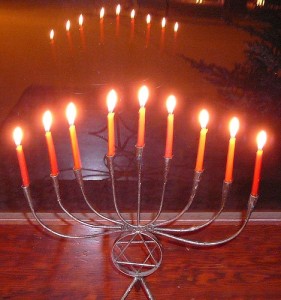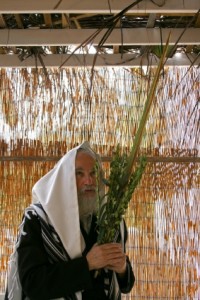Purim
Written by Zev on April 14, 2011 – 11:30 am -
Purim is one of the more raucous celebrations celebrated by the Jewish people, commemorating their liberation from the evil emperor Haman ruler of the ancient Persian empire. At this point in history, the Jewish people found themselves living in Persia as unwilling exiles from the Kingdom of Judah.
(more…)
Tags: esther scroll, grogger, megillah, purim, rattle
Posted in Festivals | No Comments »
Rosh Hashanah
Written by Zev on April 14, 2011 – 10:19 am -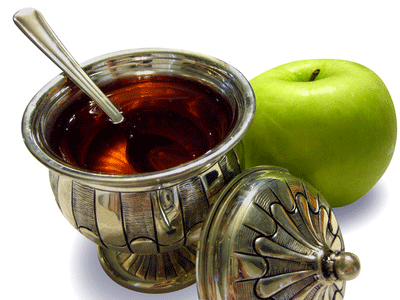
The Jewish New Year or Rosh Hashanah as it translates into Hebrew, although the literal translation for Rosh Hashanah is “Head of the Year”
Rosh Hashanah falls during the month of Tishrei, and always ten days before the Day of Atonement (Yom Kippur). Rosh Hashanah and Yom Kippur are regarded by most as the most important days in the Judaic calendar, and are generally known as the Days of Awe or Yamim Nora’im, in Hebrew. Jews in the Diaspora normally will refer to Rosh Hashanah and Yom Kippur as the High Holidays.
(more…)
Tags: apple, honey, jewish new year, pomegranate, rosh hashanah, shofar
Posted in Festivals | No Comments »
The Shabbat Table
Written by Zev on July 26, 2009 – 10:27 pm -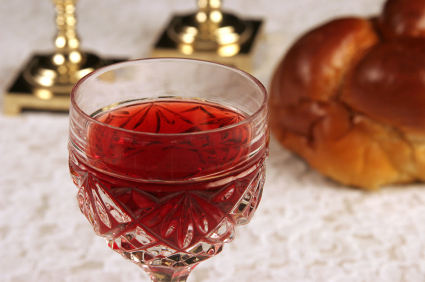
Honoring the Sabbath day, known as Shabbat in Hebrew, is considered the most important observance in Judaism.
The order to celebrate Shabbat originates in the ten commandments handed down to Moses by God on Mount Sinai. The fourth commandment (Exodus 20: 8-11; Deuteronomy 5: 14-15), translated from Hebrew, reads “Remember [observe] the Sabbath day and keep it holy”.
For Jewish people, the celebration of Shabbat honors God for creating the world in six days and resting on the seventh day. Jews around the World celebrate the day of rest and relaxation in many ways, each according to how they interpret their religion.
Shabbat commences at sunset on Friday evening and ends on Saturday at Sunrise. The duration of Shabbat should be around 25 hours, and according to the Torah, Motzeh – the end of Shabbat – begins when there are three stars in the sky.
Tags: shabbat
Posted in Festivals | No Comments »
The Passover (Pesach)
Written by Zev on March 19, 2009 – 12:00 pm -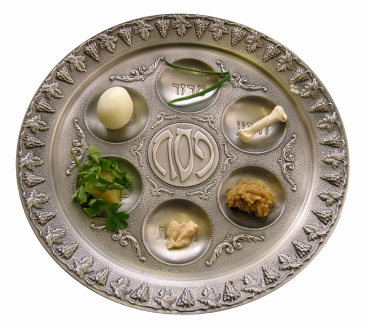
Passover, otherwise known as the spring festival, celebrates the exodus of the Jewish people from captivity and slavery by the Egyptians. According to Jewish law, Passover begins on 15 Nisan, lasting for seven days in Israel and eight for Jews living in the Diaspora.The literal translation for Passover or Pesach in Hebrew derives from when God when slewing the first-born (Exodus 12: 23) as the last of the eight curses imposed upon the Egyptians to passed over the houses of the children of Israel. In modern times, within the Diaspora, the festival came to be known as Passover, although many Jews refer to the festival as the Hag Ha-Matzot, meaning ‘the Festival of Unleavened Bread’.
Tags: matzah, passover, pesach, seder
Posted in Festivals | No Comments »
Happy Hanukkah
Written by Zev on December 20, 2008 – 10:48 am -Hanukkah – the festival of lights is here! Light the menorah, play with the dreidel and feast on latkes and sufganiyots.
Gold Menorah wishes all Jewish readers a most joyous and happy Hanukkah!
Posted in Festivals, General | No Comments »
Why Menorahs Are Lit During Hanukkah
Written by Zev on November 25, 2008 – 12:00 pm -The Menorah is a candle holder (candelabra) that is lit during the 8-day festival of Hanukkah – “The Festival of Lights”. Hanukkah takes place on the 25th Day of the Hebrew Calendar month of Kislev, which falls around Christmas time.
Hanukkah marks a divine miracle that occurred in the 3rd century BC, following the defeat of the Seleucid Empire and the recapture of Jerusalem by the Jewish Maccabee army.
During the Seleucid occupation, the Jewish temple in Jerusalem was converted into a Pagan temple. When the temple was recaptured by the Maccabees, it was rededicated as a Jewish place or worship. The rededication process required a large quantity of consecrated olive oil for the oil lamps, but only 1 day’s worth was available. Through a miracle, the lamp burnt for 8 days by which time additional consecrated olive oil was prepared. That is why the festival lasts for 8 days.
The Menorah symbolises this miracle – it holds 8 candles, plus a separate candle known as the ‘Shamash’ that is used to light the others. On the first day of Hanukkah, a single candle is lit at sundown. On each successive day, an additional candle is lit. By the final day, all 8 candles are burning. The candles are ritually required to burn for a minimum of 30 minutes.
Many cities with significant Jewish communities honor this religious holiday by placing an electrically illuminated Menorah in a public square.
The following video demonstrates the correct procedure for lighting a Hanukkah Menorah:
Tags: Hanukkah, menorah
Posted in Festivals, Judaica | 1 Comment »
History of the Dreidel
Written by Zev on November 24, 2008 – 12:00 pm -A dreidel is a toy top used to play games of chance. It is a enjoyed especially by children as part of the festivities for the Jewish holiday of Hanukkah. The name comes from the Yiddish verb dreyden meaning ‘to turn’. In Hebrew, the toy is known as a ‘Sevivon’.
The dreidel has four sides, each marked with the hebrew letters Nun, Gimel, Hay and Shin. These are the first letters of the Hebrew sentence ‘Nes Gadol Haya Sham’ meaning ‘A Great Miracle Happened There’, referring to the story of Hanukkah.
The dreidel game is interesting in that it appears to be one of the few examples of religiously sanctioned gambling, which is normally frowned upon in Judeo-Christian traditions.
It can be played with real money, but this is often substituted with gold-wrapped chocolate coins [gelt], candy or plastic pieces.
The game requires four players. Each player spins the top in turn. Each Hebrew letter is associated with a specific outcome.
Nun: Nothing (lose a turn)
Gimel: Take everything in the prize pool
Hay: Take half of the prize pool
Shin: Contribute one piece to the prize pool
The game normally goes for a number of rounds to ensure that everyone has a chance to win a prize.
There is no consensus about the origin of the dreidel game. The least fascinating explanation is that it originated in the last several hundred years in Europe, having evolved from existing childrens games like Teetotum.
A deeper story states that it originated in ancient times, in places where Jews were forbidden from practising their religion. The Jewish people used the dreidel game as a decoy to hide the fact that they were secretly studying the Torah. When inspectors used to come to enforce the ban, Jewish students would quickly hide their books and pull out dreidels and pretend to have been playing games.
The dreidel has been popularised in recent years due to its appearance on TV shows like the Simpsons and South Park. The song “I have a Little Dreidel” has also become popular in the USA and is often sung together with Christmas carols.
Here is a detailed instructional video on Hanukkah Dreidel gameplay:
Tags: dreidel, Hanukkah
Posted in Festivals, Judaica | No Comments »
Sukkot and the Sukkah
Written by Zev on October 13, 2008 – 11:00 pm -The festival of Sukkot begins on the 15th day of the Hebrew month of Tishrei, which is 5 days after Yom Kippur and lasts for 7 days. It is immediately followed by the holidays Shemini Atzeret and Simchat Torah.
Sukkot is named after the plural form of Sukkah – the type of hut that Moses and the Israelites lived in as they wandered the desert for 40 years before they reached the Promised Land. These huts were made of branches and designed to be portable.
In English, Sukkah is sometimes translated as ‘booth’ or ‘tabernacle’, hence Sukkot is also known in English as the ‘Festival of Tabernacles’ or ‘Festival of Booths’.
During this holiday, Jews construct and reside in Sukkahs. Here families eat their meals, entertain guests, relax, and even sleep if weather and space permit it. It is important for to share meals with others. In fact this sharing is so important that the holiday is also know as Chag Ha’asif, Festival of the Ingathering.
The walls of the sukkah can be made from any material, including wood, canvas, plaster, or regular walls of glass or aluminium. A sukkah may be free-standing, or include one or two sides of a building or porch in its structure. The roof of a sukkah, however, must be of organic material that is detached from the ground. Palm fronds, branches, bamboo and wood are the most common roofing materials. The amount of shade inside the sukkah must exceed the amount of sunlight that can enter through the roof.
One of the best known Sukkot ceremonies is the waving of the ‘four species’ – three branches and one fruit, depicted in the above photo. These consist of the following:
Lulav – a ripe, green, closed frond from a date palm tree
Hadass – boughs with leaves from the myrtle tree
Aravah – branches with leaves from the willow tree
Etrog – the fruit of a citron tree
The ceremony is prescribed by the Torah, and contains symbolic allusions to a Jew’s service of God.
For more information including a video on how to build a Sukkah, click on more.
Tags: sukkah, sukkot
Posted in Festivals, Judaica | No Comments »
Happy Rosh Hashanah (Jewish New Year)
Written by Zev on September 29, 2008 – 6:00 pm -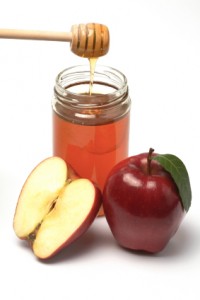
Gold Menorah wishes its readers a sweet and happy Rosh Hashanah!
Rosh Hashanah is the festival marking the start of the Jewish New Year, which occurs on the first day of the Month of Tishrei in the Hebrew calendar. This year is numbered 5769.
As the Hebrew Calendar is Lunar (based on the moon), its date changes from year to year. This year (2008), the festival starts at sunset, September the 29th and ends on sunset, October 1st.
Rosh Hashanah is a day of rest and Jewish people go to Synagogue to pray and hear the sounding of the Shofar. Jewish people greet each other joyously with the Hebrew phrase “Shana Tova!” – “A Good Year!”
The 10-day period between Rosh Hashanah and the next festival of Yom Kippur is known as the High Holidays. It is considered the best time for Jews to seek divine forgiveness and repent for wrongs commited in the previous year.
Tags: jewish new year, rosh hashanah
Posted in Festivals | No Comments »


